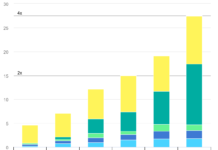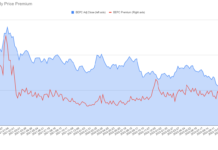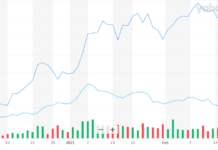by Mark Tan
The country is currently experiencing a shift toward more sustainable living. In addition to the wide array of whole food markets and hybrid cars available to today’s consumer, many people also want their investments working for the greater good. Although these investments have been around for more than a decade, the past few years have seen substantial growth in the areas of charitable investments, sustainable 401ks, and green bonds. No matter your passion, your financial portfolio can make a difference in the world, while still generating profit for you.
Charitable Investing 101
Charitable investments, also known as impact or sustainable investments, are those made in companies, organizations or funds with the intent to generate a measurable, beneficial impact on society. Rather than yielding exclusively financial returns, they seek to boost a positive social agenda, an environmental or medical cause, or back socially responsible companies.
Now Trending
The landscape of charitable investments has been growing steadily for the past few years. According to a recent study conducted by the Morgan Stanley Institute for Sustainable Investing, the total volume of these investments has nearly doubled over the past two years, growing from $3.5 trillion in 2012 to nearly $6.6 trillion in 2014.
The same study found that more than 70 percent of investors are interested in finding more charitable options and expect to see growth in the area over the next five years.
Financial Institutions. Some of the nation’s largest banking institutions have moved toward investing more assets in charitable causes. In 2013 when Morgan Stanley formed the Institute for Sustainable Investing, it did so with the goal of having $10 billion in client assets invested for social and environmental causes within the first five years. Chief Executive Audrey Choi said, “We fundamentally believe that considering the sustainability and impact of your investments is a business opportunity for us and our clients. We also think it’s a fundamentally strong value proposition to integrate thinking about large global issues in your investing decisions.”
Bank of America’s head of Global Wealth and Retirement Solutions Andy Sieg agrees, saying, “We think impact investing is an idea whose time has come in mainstream wealth management.”
Corporations. Many businesses are also beginning to see the benefits of focusing on sustainability and providing ethical investment options. Smart investing, good publicity, and a positive reputation will eventually lead to profit, but companies are also seeing improvement off the books. A charitable giving program can improve employee engagement and company morale. When employees are pleased with their corporate culture it drives them to perform better.
Higher levels of employee engagement, coupled with more responsible and forward-thinking practices have led many of the nation’s largest corporations to work toward improving climate change, adopting sustainable production and operation practices, and addressing poor conditions within their organizations as well as in developing countries.
Some companies have taken responsible financing one step further from simply running their businesses and choosing their investments more responsibly, and begun helping their employees invest responsibly as well. The industry is beginning to see a trend in companies choosing their employee 401k programs based on sustainability ratings. These plans rate the sustainability of its participants’ holdings to ensure each dollar invested is done so ethically.
Millennials. While the nation’s banking institutions and business are shifting their priorities and providing the capital behind the charitable investing trend, the real driving force behind the growth is the millennial generation. While young adults may not be contributing large sums to charities each year, studies show that the majority of the generation has made donations, solicited donations and/or volunteered, and even more have the intention to do so in the future.
Bradford Bernstein, Senior Vice President of Wealth Management with UBS in Philadelphia thinks that experienced investors could actually learn something from the younger generation. “Millennials are the biggest force behind this trend of socially responsible investing,” he said. “[They] are interested in making a difference, and they choose to invest and buy from companies that are making a social statement.” It is this generation that will be running the banks and businesses in a few years. When their drive to make a difference meets the ability to put the capital behind it, the market with undoubtedly see even more exponential growth in this area.
Profit Concerns
Despite overwhelming growth and the desire to make a difference, there are still financial considerations to be made when choosing investments. Charitable investing is about finding the balance between investments and maximizing the social benefits of those investments. A portfolio built entirely on emotional and moral decisions is not likely to yield the same returns as one that focuses solely on appreciation and growth.
The common misconception is that charitable investments do not perform as well as others. It may be true that the returns may be lower than in some more traditional investments. However, the drive and passion behind the causes being funded by these investments can lead to greater returns.
The Forum for Sustainable and Responsible investment conducted a study in 2012 that found that at the time, one out of every nine dollars under professional management in the country was invested according to sustainable strategies. The report found that charitable investing grew 486 percent between 1995 and the date of the study, while other assets under professional management only grew 376 percent during that time period. The responsible investments saw greater growth in response to social changes in the country, government backing, and through a desire and a need to affect high-profile issues, such as climate change.
As is always the case when building a financial portfolio, certain types of investments may be more risky than others. Choosing stocks based on the organization’s social responsibility, for example, may not be as productive as buying based on appreciation. Because of their limitations, stocks focused specifically on making a difference often are not very growth-oriented.
Identifying Responsible Investments
Mutual Funds. If you are ready to start making your money work for more than just returns, socially responsible or faith-based mutual funds are a great starting point. It can be difficult to identify sustainable and ethical companies. There may be a false perception that a certain company would not do anything immoral, but mutual fund managers generally have done their due diligence. These funds are often designed to favor companies that meet certain criteria, cover companies with high social, environmental and governance standards and actively avoid companies with unsustainable business practices.
Green Bonds. For those investors who want to balance their portfolio to include more stable investments, green bonds can round out a portfolio while encouraging environmental sustainability. Green bonds are typically issued by federally qualified organizations for the development and maintenance of brownfield sites
– areas of land that are underutilized or underdeveloped. Other green bonds aim to raise funds to support lending for projects that seek climate change or renewable energy.
Due Diligence. When investigating companies be wary of those that use good deeds to conceal bad behavior. Instead focus on companies where environmental and social concerns rank high among the corporation’s priorities, like Google (GOOG).
In such companies the executives often make substantial contributions to the company-backed causes and truly live their values.
Identify companies that provide sustainable and helpful goods or services. These companies conserve energy, operate efficiently, and design products and services using recycled materials that save the user money and make their lives better. Companies such as Nike and Johnson Controls (JCI) fit this description.
Closely monitored working conditions, strong safety and health standards, and high employee satisfaction are also good indicators of a responsibly-run organization. Employee satisfaction and engagement ratings do not lie and can help identify those organizations with an ethical mission statement, such as Apple.
Last, but not at all least, seek out investments in businesses with a long-standing reputation for product sustainability, transparency, and leadership. Panera, for example, prides itself on its history of fair animal treatment, using local produce, and adding no artificial ingredients to its healthy menu items. Strong leadership with strong ethical beliefs can ensure that your money will be put toward a good cause.
Getting Started
The first step toward building a sustainable investment portfolio is to decide how to blend your finances and life views.
For example, some investors may view Coca-Cola as an organization that mass produces sugary, unhealthy drinks to the American public, while others may see a global clean-water and efficiency program.
Define what causes and cultures are important to you and begin investigating companies that share your vision, but that does so while keeping an eye on growth. Experts suggest starting slowly, and finding a guide.
About the Author
Guided by his strong faith and charitable instinct, Mark Tan is committed to helping others live happy, virtuous lives.
At Thrivent Financial, Mark assesses his clients’ unique situations and creates financial plans customized to their needs. He empowers his clients to make informed decisions to stay on track and reach their goals. His sophisticated approach to financial planning helps clients assess multiple financial goals and concerns. As part of a team of professionals that share his commitment to service, Mark has the opportunity to work one-on-one with clients and also access additional resources and knowledge from of members of his team when needed. Contact Mark at mark@mark-tan.com. To view or download the entire eBook, visit http://www.mark-tan.com/.








